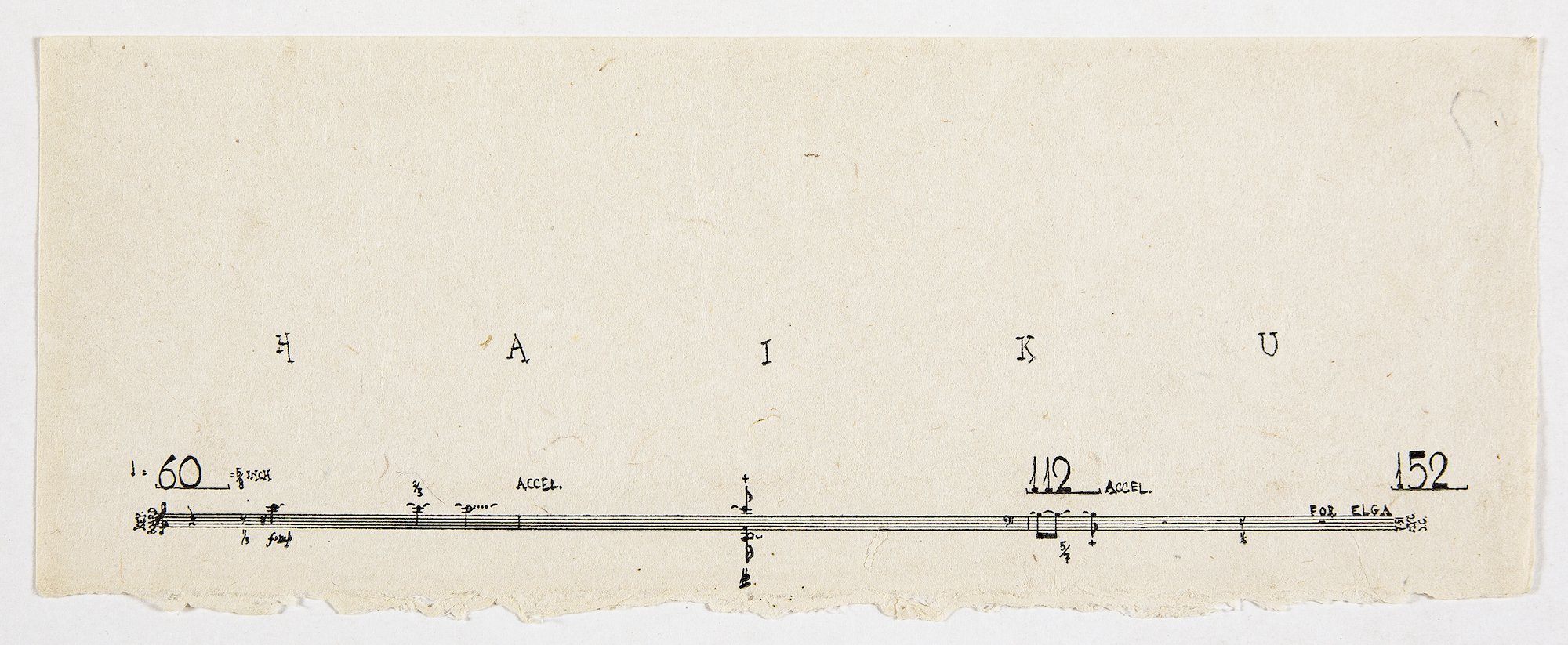Haiku

Here John Cage is writing in November 1950 to Cecil Smith, the Editor of Musical America, in passionate defence of Eric Satie, who had been attacked in the journal in an article by Abraham Skulsky. In 1948, Cage had delivered a controversial talk at Black Mountain College, titled ‘Defense of Satie,’ in which he denounced Beethoven – a slightly impolitic move, as Beethoven’s string works were a featured part of the summer curriculum of that year.
The length of a work is no measure of its quality or beauty, most of post-Renaissance art-propaganda to the contrary. If we glance momentarily at R. H. Blythe’s book on haiku (the Japanese poetic structure: 5, 7, 5 syllables), we read (pg. 272): ‘Haiku thus make the greatest demand upon our internal poverty. Shakespeare (cf. Beethoven) pours out his universal soul, and we are abased before his omniscience and overflowing power. Haiku require of us that our soul should find its own infinity within the limits of some finite thing.’ My mind runs now to Satie’s Vexations, a short piece to be played 840 times in a row. A performance of this piece would be a measure, accurate as a mirror, of one’s ‘poverty of spirit’ without which, incidentally, one loses the kingdom of heaven.
Excerpted from Laura Kuhn, ed., The Selected Letters of John Cage (Middletown, Connecticut: Wesleyan University Press, 2016)

– Sayan Skandarajah